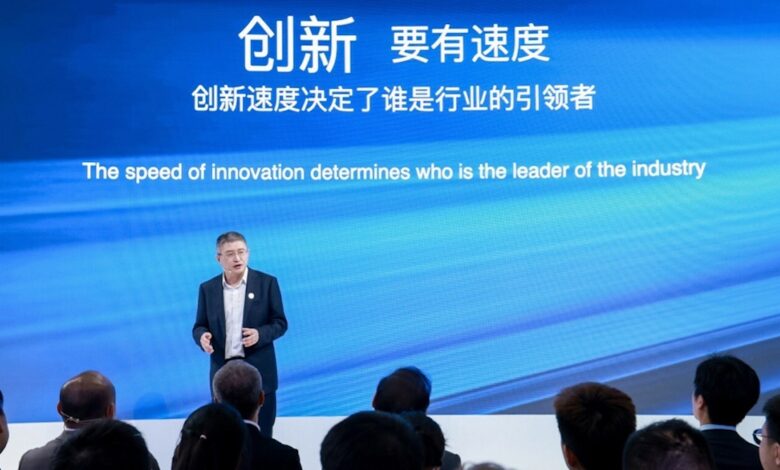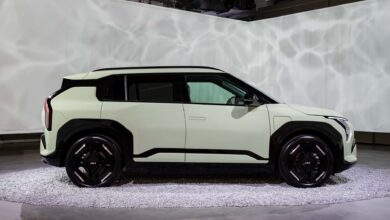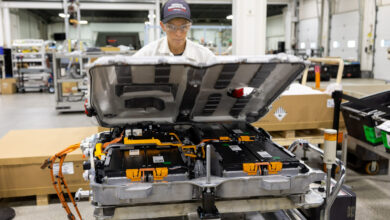CATL Shenxing Battery Strikes Fear Into The Hearts Of Governments & Automakers

Sign up for daily news updates from CleanTechnica on email. Or follow us on Google News!
CATL just announced it has already improved on the Shenxing LFP battery it introduced last year. According to the company, its latest battery, called Shenxing PLUS, can charge at 4C, add 600 kilometers of range in just 10 minutes using a DC fast charger, and power an electric car for up to 1000 kilometers on a full charge. BOOM! The EV revolution just got disrupted and nothing will ever be the same again. Here is a video from CATL that explains the Shenxing PLUS battery in greater detail.
How are automakers in Europe, North America, Japan, and South Korea going to compete with their electric cars that use outdated technology? Will their ads read, “Our cars are almost as good as those with the CATL Shenxing PLUS battery, except they have a shorter range and take three times as long to charge?” That is both the blessing and the curse of this new battery from CATL. It can potentially be a giant leap forward for the EV revolution, but it will cause enormous waves throughout the auto industry, particularly in the US and Europe where governments have slapped higher tariffs on Chinese made electric cars and their components in hopes of protecting their domestic manufacturers.
Everyone is petrified of the Chinese, primarily because there is a general feeling that every industry in China is heavily subsidized by the central government. Those concerns are real. Globally, the auto sector accounts for about 5 percent of the word’s economy and employs an estimated 50 million people either directly or indirectly. A massive disruption of the industry would send shock waves through the entire world economy. Those shock waves in turn could lead to political upheavals that destabilize several governments.
The CATL Shenxing PLUS Breaks New Ground
All that because of a battery? Yes, indeed. The potential ramifications of the Shenxing PLUS battery are really that big. On the one hand, this new technology from CATL is like the difference between a propeller-driven airplane lumbering across the Atlantic at 250 mph and a commercial jetliner that travels more than twice as fast. It is the piece of the EV revolution that has been missing until now. From the perspective of decarbonizing the transportation sector, it is wonderful news. Humanity needs the Shenxing PLUS battery to move beyond the fears people have about owning an electric car. That in turn could open the floodgates and allow the EV revolution to succeed.
If only it wasn’t CATL doing this, we would all be dancing in the streets and celebrating because we could soon be driving electric cars that charge in minutes and can travel long distances without stopping every 90 minutes for a fresh injection of electrons. Why does it have to be the Chinese doing this? It’s like Indiana Jones looking down into the Well of Souls and asking “Why does it have to be snakes?” Here’s more information about the CATL Shenxing Plus battery from the press release:
The 1,000 km pure electric range comes from continuous technological breakthroughs. The cathode of the Shenxing PLUS is made with a granular gradation technology, which places every nanometer particle in the optimal position to achieve ultra-high compact density. The proprietary 3D honeycomb-shaped material is added to the anode, boosting the energy density while effectively controlling the volume expansion during charge and discharge cycles. The single-piece casing, which is an industry first, optimizes the internal space utilization, allowing the Shenxing PLUS cells to reach an unprecedented energy density level.
At the system level, the Shenxing PLUS battery pack has a topological structure optimized on top of module-free CTP 3.0 technology, enhancing the packing efficiency by 7%. Through breakthroughs in materials and structure, the Shenxing battery system’s energy density surpasses the 200 Wh/kg threshold for the first time, reaching 205 Wh/kg, making ranges over 1,000 kilometers a reality.
Aside from offering long range, Shenxing PLUS also charges fast. It can deliver a 600 km range in just 10 minutes of charging; far surpassing the usual batteries available on the market and realizing a true superfast charging speed of one kilometer per second.
To achieve the leapfrogging of charging speed, Shenxing PLUS applies technologies including fast lithium-ion conductive coating, the addition of transition metal elements, and new nanometer encapsulation, rendering smoother and more efficient energy transmission between cathode and anode materials. CATL has expanded the overcurrent area and capacity of the terminals in the battery system to rapidly dissipate heat during high-current charging. In terms of BMS core algorithms, CATL’s newly developed AI polarization model can predict and control the charging current in real time, enabling faster and smarter energy replenishment.
CATL & Politics
Well, that is certainly interesting news, even if the technical details may be a bit obscure for the casual reader. There is also no direct mention of how much the new miracle battery may cost compared to its less technologically evolved siblings, but internet sources claim prices of less than $60 per kWh will be possible by later this year. That in and of itself is disruptive news if true.
A report by Newsweek suggests the International Energy Agency is worried about the effect the CATL Shenxing battery and other improvements to electric cars coming from Chinese companies will have on international trade. It says the IEA’s 2024 Critical Minerals report “raised alarms about China’s stranglehold over the supply of critical materials needed for battery production, which could lead to economic and strategic disadvantages for other countries.” That may be so, but Newsweek failed to mention the IEA 2024 Global EV report which was highly optimistic about the EV revolution.
Combining analysis of historical data with projections through 2035, this year’s report examines key areas of interest such as the deployment of electric vehicles and charging infrastructure, battery demand, investment trends, and related policy developments in major and emerging markets. It also considers what wider EV adoption means for electricity and oil consumption and greenhouse gas emissions. The report includes an analysis of lessons learned from leading markets, providing information for policymakers and stakeholders on policy frameworks and market systems that support electric vehicle uptake. The report notes that electric cars continue to make progress towards becoming a mass-market product in a number of countries.
“Tight margins, volatile battery metal prices, high inflation, and the phase-out of purchase incentives in some countries have sparked concerns about the industry’s pace of growth, but global sales data remain strong. In the first quarter of 2024, electric car sales grew by around 25 percent compared with the first quarter of 2023, similar to the year-on-year growth seen in the same period in 2022. In 2024, the market share of electric cars could reach up to 45 percent in China, 25 percent in Europe, and over 11 percent in the United States, underpinned by competition among manufacturers, falling battery and car prices, and ongoing policy support.”
The Takeaway
Readers who have achieved senior status have seen this movie before. In the 1950s, Volkswagen disrupted the US auto industry by importing the original Beetle — a small, light, efficient car that cost far less than anything Detroit had to offer and got triple the gas mileage. A decade later, the Japanese invaded America with a bevy of small, light, efficient cars that cost far less than anything Detroit had to offer and got triple the gas mileage. Critics screamed that Japanese companies were heavily subsidized by their government, and there was some truth to that claim. But the curtain fell and time passed and soon the Japanese companies became embedded in the American economy.
Most of the cars from China today are well made and far more refined than those early Volkswagens, Toyotas, and Hondas. There is no reason why Americans should be denied access to them with policies my old Irish grandmother would say are like cutting off your nose to spite your face. There has to be a way to reach a modus vivendi here that strikes a balance between these competing interests. Can we not craft policies that encourage Chinese companies like CATL to build factories in America that will employ American workers? A 100 percent import tariff makes America look weak. It’s certainly not something to be proud of. Perhaps there will be a change after the next election.
Decarbonizing the transportation sector is too important to let petty squabbles stand in the way. We need to figure this out ASAP in order to accomplish the main goal, which is lowering the carbon emissions from cars and trucks enough to keep the Earth from tipping over into a meltdown that will put all humanity at risk. We need solutions, not trade wars, but the prospects for cooler heads to prevail seem to be getting dimmer with every passing day.
The answer to pollution from gasoline- and diesel-powered vehicles is within our grasp, if we will only put aside our differences and agree to work together to keep from turning the Earth into an overheated orb that no longer supports human life. Are political squabbles really more important than that? It is troubling how many would answer “yes” to that question.
Have a tip for CleanTechnica? Want to advertise? Want to suggest a guest for our CleanTech Talk podcast? Contact us here.
Latest CleanTechnica.TV Video
CleanTechnica uses affiliate links. See our policy here.



